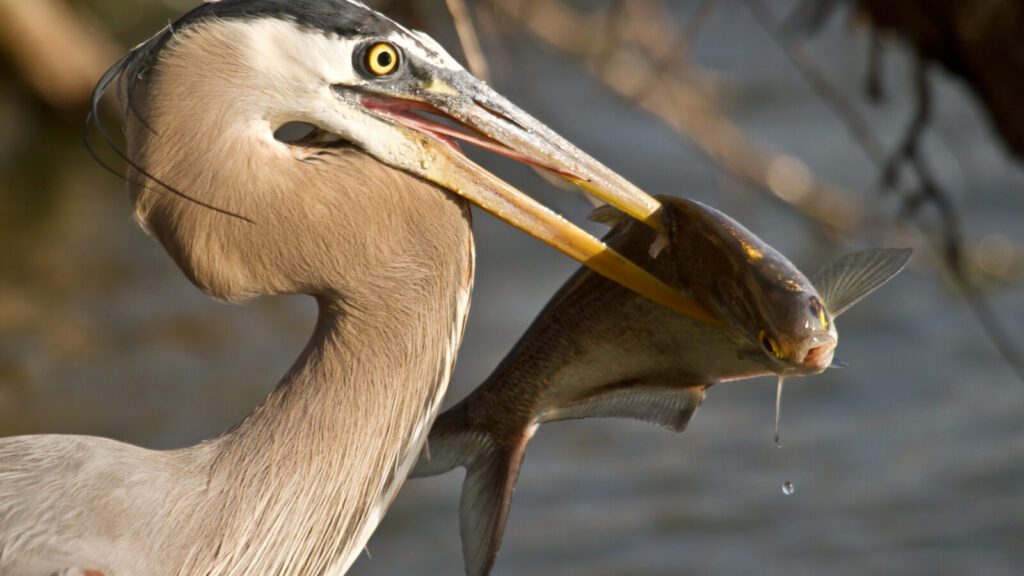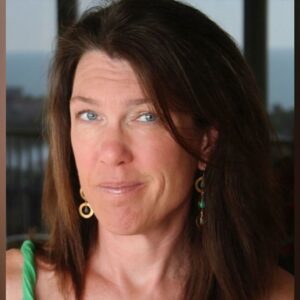

Originally published on CNN.com, October 22nd


By Lydia Strohl (Opinion Contributer)
When I first learned that October 22 marks Half-Earth Day, I thought it was because the date is six months to Earth Day. (True.) But it’s got a message all its own.
Half-Earth is the notion that for humans to survive, we must retain earth’s waning biodiversity by reserving half the planet for nature, stabilizing large swaths of ocean, prairie, rainforest and desert to house the birds, insects and ecosystems that affect the water we drink, the food we eat, the air we breathe. Not to mention the economies, cultures and past-times that sustain us.
The Half-Earth Project was inspired by legendary Harvard biologist E.O. Wilson, who died in 2021 at the age of 92. In “Half-Earth: Our Planet’s Fight for Life,” Wilson wrote: “We would be wise to find our way as quickly as possible out of the fever swamp of dogmatic religious belief and inept philosophical thought through which we still wander. Unless humanity learns a great deal more about global biodiversity and moves quickly to protect it, we will soon lose most of the species composing life on Earth.”
This means us, people, who Wilson calls a “lucky accident of primate evolution during the late Pleistocene.”
Not a particularly happy accident, perhaps, for Planet Earth. Since 1970, the global population has doubled to nearly 8 billion. And in those five decades, monitored wildlife populations have declined by an average of 69%, warns the recent Living Planet Report, World Wildlife Fund’s study of the abundance of species worldwide (select vertebrate species; others are difficult to track). Freshwater populations have been hit the hardest, declining 83% over this time period. One million plant and animal species, out of the estimated 8 million out there, are in danger of extinction.
It is time to change our ways, from using to stewarding earth’s resources. People cannot thrive at the expense of nature. Latin America has seen a whopping 94% decline in species populations. Meanwhile, deforestation for crops and cattle, legal and illegal mining and logging, development, and devastating wildfires have contributed to a 20% loss of the Amazon rainforest – an area the size of France. This doesn’t just affect the 350 indigenous communities and untold species of plants, animals and insects living there, but all of us, as the 400 billion trees that make up the Amazon rainforest produce an estimated 6% of earth’s oxygen.
What makes humans more comfortable on earth now threatens the planet: energy, food production, growth in housing and commercial development. These are all systems Wilson believed we need to rethink. But just as the problem lies with us, so does the solution.
To move people to action, Jennifer Morris, CEO of The Nature Conservancy, thinks it’s important to talk about what matters to them, citing health care, clean air and jobs. Morris spoke at a recent Half-Earth Day conference hosted by Smithsonian Institution and the E.O. Wilson Biodiversity Foundation, bringing together government, community, corporate and conservation stakeholders like The Nature Conservancy, Audubon, and supporters like the Bezos Earth Fund. “Governments aren’t going to move until people move,” Morris said.
The problems are thorny, however: even high-minded efforts can provoke Mother Nature. “The biggest threat to forests in Virginia is solar,” Morris said, referring to clean energy projects slated to take out thousands of acres of trees. “We can be smart where we put solar and wind … in a way that doesn’t undermine biodiversity,” Morris added.
The Half-Earth Project looks at growth through the lens of nature, with tools that map richness and rarity in wildlife populations as well as human pressures and existing protections, hoping to inform both preservation and development. I dial their online map down to my community, close to the screaming orange urban mass of Washington, DC, but dotted with green conservation areas established by both public and private authorities.
The E.O Wilson Biodiversity Laboratory – located in Mozambique’s Gorongosa National Park, which was once decimated by civil war and other human ills – provides a blueprint not only for rebuilding biodiversity but also training new biologists and conservationists. The Half-Earth project also involves indigenous communities – which have traditionally balanced human needs with nature – in their programs, bringing together past and present, to work together towards a durable plan for our future.
While the first Earth Day took place in 1970 to celebrate conservation efforts, Half-Earth Day is more of a caution. Whatever your beliefs on climate change, this much is clear. We’re losing whitetip sharks and harpy eagles, the inspiration for ‘Fawkes’ in the Harry Potter films. Gone are the Bramble Cay melomys, a small rodent whose habitat, food source and nesting sites were eradicated by storms and unprecedented flooding. You may never see a pink dolphin, but the interplay of plant, animal and insect species sustains us.
Attacking a problem of this scale requires all of us – from those seated in governments and board rooms to our own kitchen tables – to come together. Too often, “solutions” whipsaw between administrations with their own political agendas. “Meanwhile, we thrash about, appallingly led, with no particular goal in mind other than economic growth, unfettered consumption, good health, and personal happiness,” Wilson wrote. He placed his faith in nature, and we should too.
“We need to listen to what the birds are telling us. We’ve lost three billion birds in my lifetime,” says Audubon CEO Elizabeth Grey, who is in her 50s. “Birds are sentinels for healthy land and water – if birds are in trouble, people are too.”
The canary is singing. Listen, before its voice is stilled.
Editor’s Note: Lydia Strohl is a freelance writer in Washington, DC. More of her work can be found here. The views expressed in this commentary belong to the author.

